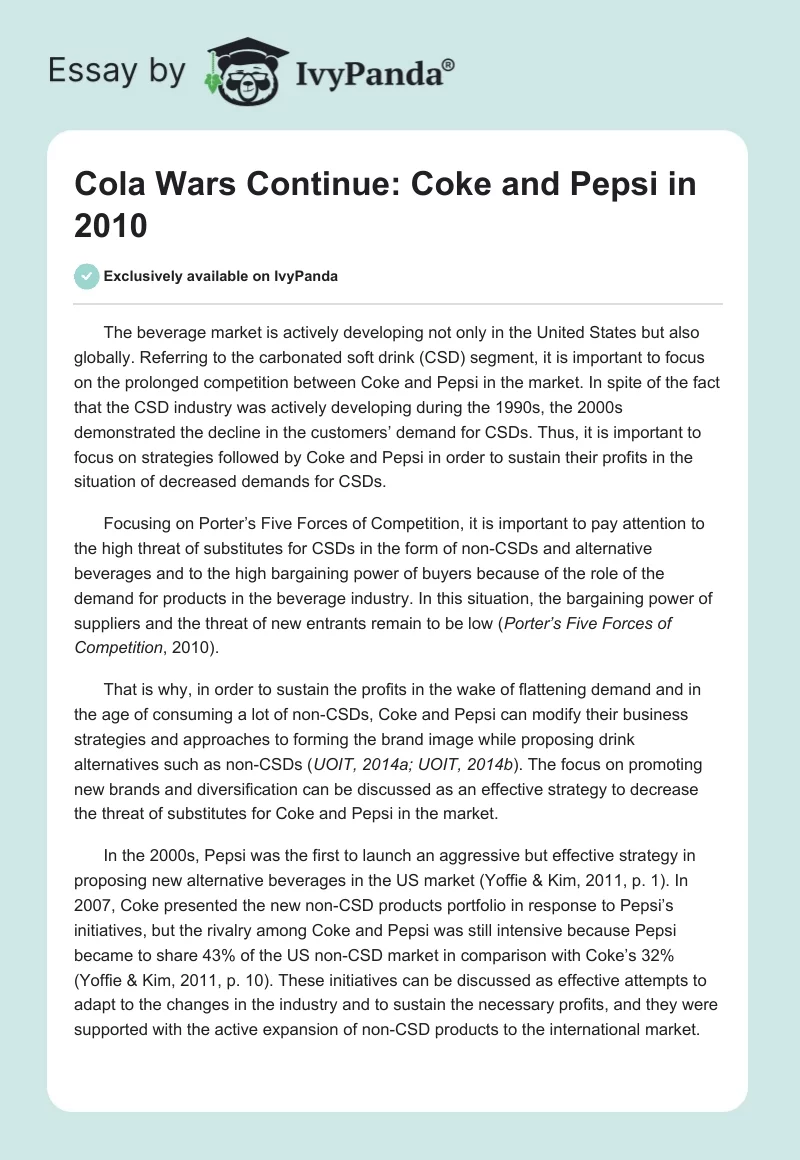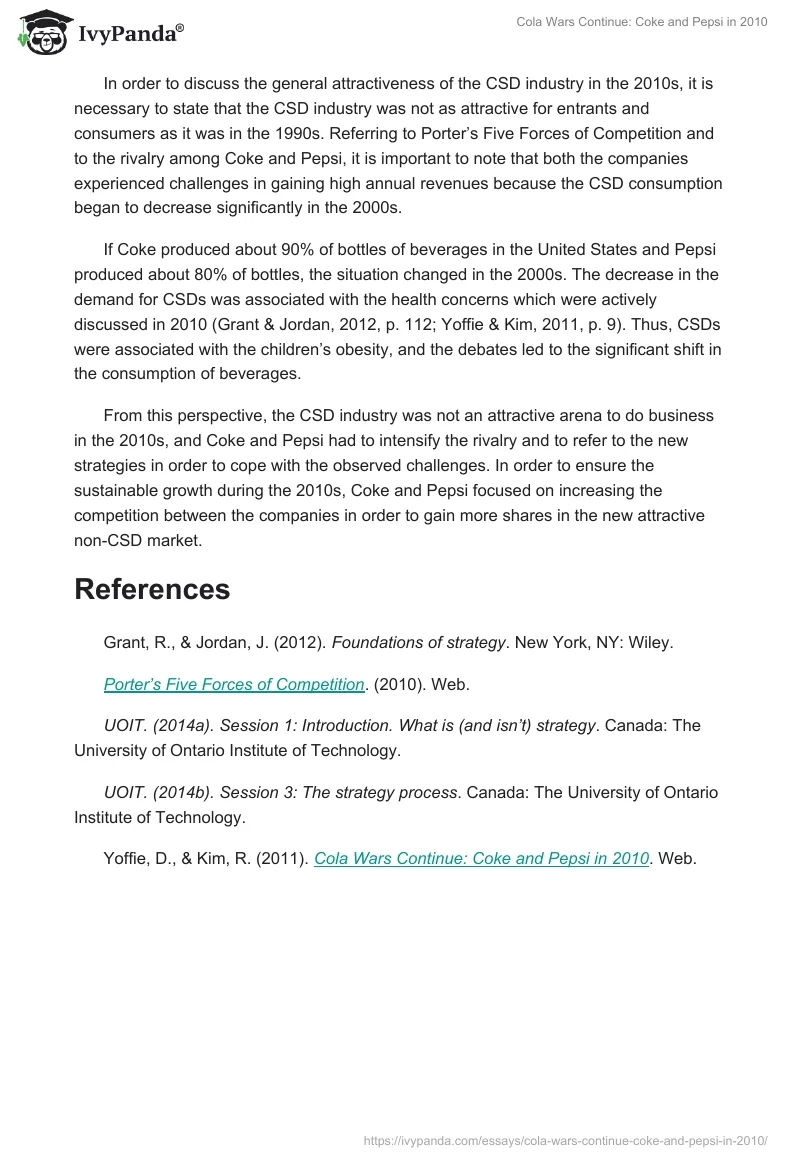The beverage market is actively developing not only in the United States but also globally. Referring to the carbonated soft drink (CSD) segment, it is important to focus on the prolonged competition between Coke and Pepsi in the market. In spite of the fact that the CSD industry was actively developing during the 1990s, the 2000s demonstrated the decline in the customers’ demand for CSDs. Thus, it is important to focus on strategies followed by Coke and Pepsi in order to sustain their profits in the situation of decreased demands for CSDs.
Focusing on Porter’s Five Forces of Competition, it is important to pay attention to the high threat of substitutes for CSDs in the form of non-CSDs and alternative beverages and to the high bargaining power of buyers because of the role of the demand for products in the beverage industry. In this situation, the bargaining power of suppliers and the threat of new entrants remain to be low (Porter’s Five Forces of Competition, 2010).
That is why, in order to sustain the profits in the wake of flattening demand and in the age of consuming a lot of non-CSDs, Coke and Pepsi can modify their business strategies and approaches to forming the brand image while proposing drink alternatives such as non-CSDs (UOIT, 2014a; UOIT, 2014b). The focus on promoting new brands and diversification can be discussed as an effective strategy to decrease the threat of substitutes for Coke and Pepsi in the market.
In the 2000s, Pepsi was the first to launch an aggressive but effective strategy in proposing new alternative beverages in the US market (Yoffie & Kim, 2011, p. 1). In 2007, Coke presented the new non-CSD products portfolio in response to Pepsi’s initiatives, but the rivalry among Coke and Pepsi was still intensive because Pepsi became to share 43% of the US non-CSD market in comparison with Coke’s 32% (Yoffie & Kim, 2011, p. 10). These initiatives can be discussed as effective attempts to adapt to the changes in the industry and to sustain the necessary profits, and they were supported with the active expansion of non-CSD products to the international market.
In order to discuss the general attractiveness of the CSD industry in the 2010s, it is necessary to state that the CSD industry was not as attractive for entrants and consumers as it was in the 1990s. Referring to Porter’s Five Forces of Competition and to the rivalry among Coke and Pepsi, it is important to note that both the companies experienced challenges in gaining high annual revenues because the CSD consumption began to decrease significantly in the 2000s.
If Coke produced about 90% of bottles of beverages in the United States and Pepsi produced about 80% of bottles, the situation changed in the 2000s. The decrease in the demand for CSDs was associated with the health concerns which were actively discussed in 2010 (Grant & Jordan, 2012, p. 112; Yoffie & Kim, 2011, p. 9). Thus, CSDs were associated with the children’s obesity, and the debates led to the significant shift in the consumption of beverages.
From this perspective, the CSD industry was not an attractive arena to do business in the 2010s, and Coke and Pepsi had to intensify the rivalry and to refer to the new strategies in order to cope with the observed challenges. In order to ensure the sustainable growth during the 2010s, Coke and Pepsi focused on increasing the competition between the companies in order to gain more shares in the new attractive non-CSD market.
References
Grant, R., & Jordan, J. (2012). Foundations of strategy. New York, NY: Wiley.
Porter’s Five Forces of Competition. (2010). Web.
UOIT. (2014a). Session 1: Introduction. What is (and isn’t) strategy. Canada: The University of Ontario Institute of Technology.
UOIT. (2014b). Session 3: The strategy process. Canada: The University of Ontario Institute of Technology.
Yoffie, D., & Kim, R. (2011). Cola Wars Continue: Coke and Pepsi in 2010. Web.


